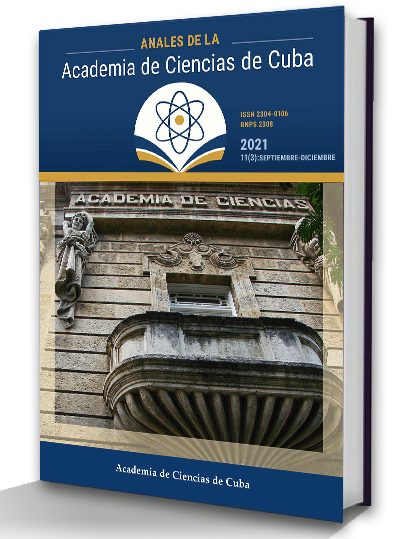Epidemiological and clinical evolution of patients with Cuban epidemic optic neuropathy
Keywords:
epidemic, ocular fundus, optic neuritis, Cuban epidemic optic neuropathy, endemic patternAbstract
Introduction: In the first quarter of 1992, ophthalmologists from Pinar del Río province began to report an unusual number of patients with bilateral visual deficit without striking manifestations in ocular fundus, an entity that was called the Cuban epidemic optic neuropathy. The objective was to describe the characteristics and evolution of patients who were affected by Cuban epidemic optic neuropathy in the Santiago de Cuba province, as well as to identify the trend of the disease.Methods: A longitudinal piece of research was carried out from January 2003 to December 2019. The population was composed of 58 analysis units. The results were presented in the form of simple frequency distribution tables and contingency tables.
Results: The highest incidence rates with figures of 0,5 per 100 000 inhabitants correspond to the years 2009, 2012 and 2015. In the municipality of Santiago de Cuba, 84,9 % of those affected occurred in urban areas; in Mella municipality, it was 77,8 % and 80.0 % in San Luis. The interval from 35 to 44 years had the highest percentage for males, 47,2 %; an arithmetic mean of 39,2, a median of 41 and a mode of 37 stand out. 100 % of the patients suffered a decrease in their vision. Conclusion: the existence of a new period of Cuban epidemic optic neuropathy was demonstrated, marked by an epidemic pattern with low incidence and a stationary trend.
Downloads
Downloads
Published
How to Cite
Issue
Section
License
The journal Anales de la Academia de Ciencias de Cuba protects copyright, and operates with a Creative Commons License 4.0 (Creative Commons Attribution-NonCommercial License 4.0). By publishing in it, authors allow themselves to copy, reproduce, distribute, publicly communicate their work and generate derivative works, as long as the original author is cited and acknowledged. They do not allow, however, the use of the original work for commercial or lucrative purposes.
The authors authorize the publication of their writings, retaining the authorship rights, and assigning and transferring to the magazine all the rights protected by the intellectual property laws that govern in Cuba, which imply editing to disseminate the work.
Authors may establish additional agreements for the non-exclusive distribution of the version of the work published in the journal (for example, placing it in an institutional repository or publishing it in a book), with recognition of having been first published in this journal.
To learn more, see https://creativecommons.org






